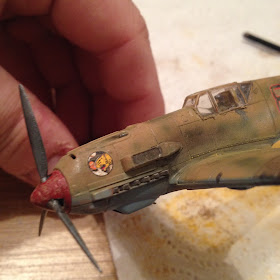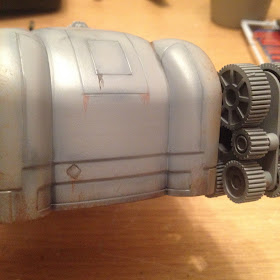Hello again, Bat-fans.
So I survived Ofsted and - Glory, Glory, Hallelujah! - we are out of Special Measures. As a reward to myself I got a little treat; two figures from the Knight Models Batman range. These minis are so horrifically expensive that they'll never be more than a treat and a chance to paint something to a high quality display standard.
But how to display them?
Here's a Bat-Fact, Bat Fans. The Eaglemoss Batmobile collection of die casts are in 1;43, which is as near as makes no odds 32mm scale. The BMG figures are 35mm which, as far I am concerned, falls squarely into the category of Good Enough. Even better, they come with their own little plastic display case.
A quick trip to ebay scored me this little beauty:
Beauty is, of course, very much in the eye of the Beholder. This is the Dark Knight Returns Batmobile: the tank that the retired Bruce Wayne brings out of storage in Frank Miller's magnum opus.It cost five of Her Majesty's pounds from ebay. As with all die casts the detail is there, just hidden by a flat coat of paint.
So out comes the airbrush and away we go.
(This is more or less a test piece for my New Top Sekret Project, so you'll see that I'm using modeller's techniques rather than miniature painter's techniques. However, as I relearn them I remembered that there's an awful lot of bleed through as you'll see)
This is called pre-shading. As you can see, the beast has been primed and then I've airbrushed black over the main panel lines. This will show through the base coat adding some definition even before we get stuck in on detailing.
As you can see, pre-shading works.
Next, I add some chips using the same technique as on miniature armour. This is also the first bit of edging - what modelers call a pin wash. A thin wash is allowed to run along the panel lines to add depth. This one was neat Badab Black:
And here I tried it with thinner but it actually created a much messier finish.
I mixed up some rust from transparent orange, clear red and Ap strong wash and added it around some of the more obvious points - the beast has been left in a damp cave for 10 years, after all. I considered stippling but decided to go with streaks.
Around the engine parts, Tamiya Smoke does its usual wonderful job of creating oil leaks, drip and splashes:
At this point I unleash my secret weapon:
This used to be called Klear or Future in the US. It's basically a clear acrylic gloss and costs 3.15 for the bottle here. A shot of this run through the airbrush protects all of the painting done so far and means that weathering can be applied and then rubbed off, watered down or removed entirely if it goes wrong without damaging the basic paintjob:
It has the added advantage of making the panel lining even easier as the gloss surface allows the wash to be wicked up from the brush into the recessed line much easier. Note how much tidier the panel lines are after the pledge coat than before:
We're now ready for the final weathering which is done with some classic drybrushing and pastels. This is another model maker's technique and is a lot cheaper than the MIG or Forgeworld pigments. You simply scrape off some pastels to give you a pile of dust and apply the dust to the model, working it into the paintwork and varius crevices. So here you can see I've added some more rust and some mud.
A further shot of pledge over the top seals the lot.
The Beast is now done but the grand unveiling will have to wait until Wayland Games pull their fingers out and actually send me my Batman and Joker.
Tune in tomorrow on the same Bat Channel to see what else I've been doing to get myself upskilled for the Top Sektrit Project. And if you want a clue as to what is causing me to practice all these fine scale building and painting techniques? Well, I last built a model 6 years ago so I suppose you can say that all of this has happened before and all of this will happen again...



















































